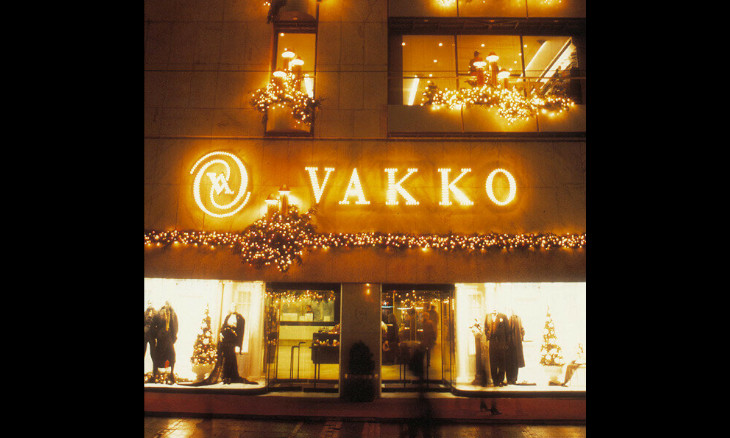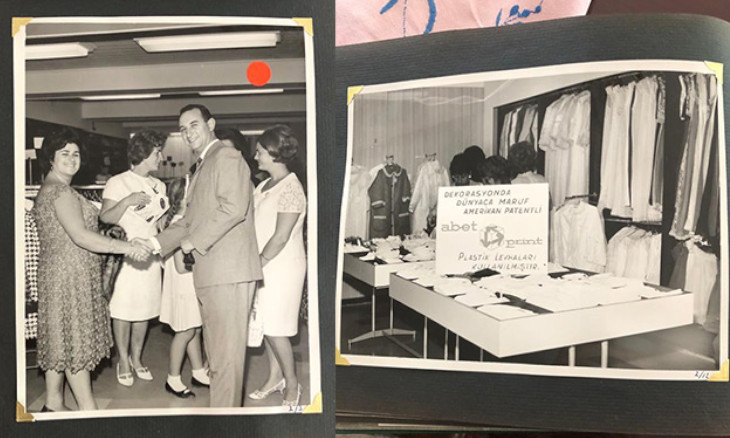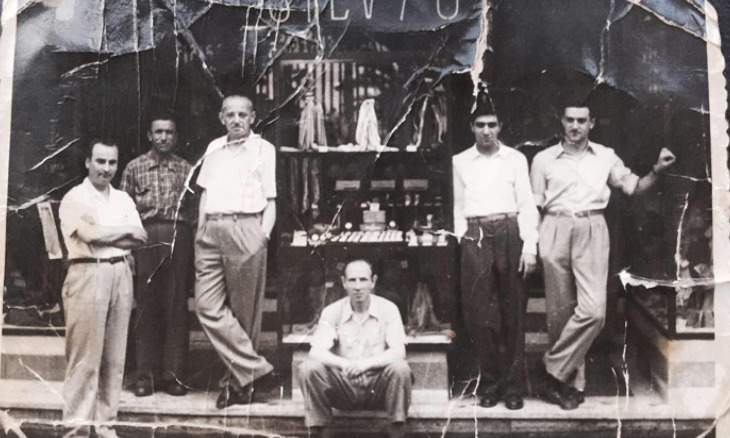Beyoğlu’s Jewish landmarks in fashion
Mois Gabay writes: The Beyoğlu brands of our childhood no longer stand at their former venues. But just as the late Vitali Hakko once said, we ought to focus on whatever has remained from them, learn about them so that today’s Beyoğlu becomes meaningful for us.
Mois Gabay
I wrote this article on top of a Singer sewing machine that was made in 1955.
“If I say I want to remake the old Beyoğlu, I know this could only be a dream. The people and the establishments that have made Beyoğlu, the Beyoğlu of that time are no longer there. Most of them are no longer with us. But those people who lived during that period are still among us. Like me. I know that these people are excited when a better and a more beautiful Beyoğlu is mentioned. We should review whatever is left of Beyoğlu. Its buildings, structures and culture. We should repair, clean and reopen them for art and cultural usage.” Those are the words of Vitali Hakko, the owner of the iconic Turkish brand Vakko.
 The first Vakko store opened in Beyoğlu in 1962. Photo courtesy: www.vakko.com
The first Vakko store opened in Beyoğlu in 1962. Photo courtesy: www.vakko.comThe shop window of the brand Vakko is one of my childhood memories from Beyoğlu, the central district of Istanbul where I was born and grew up. On the night of Rosh Hashanah (New Year), we would walk from the Neve Shalom Synagogue to our house in Taksim and my father would always show me the sign at the Vakko shop window. It would say: “We are closed because of the holidays.” Vakko’s consciousness of the New Year and the other Jewish holidays set a good example for our community. I was then that I realized someone from our faith owned the brand Vakko.
At other times, whenever my father and I would go to Vakko in Beyoğlu, my father would always ask for Mr. Albert. If he wasn’t there, my father would send him his greetings.
The Beyoğlu brands of our childhood no longer stand at their former venues. But just as the late Vitali Hakko once said, we ought to focus on whatever has remained from them, learn about them so that today’s Beyoğlu becomes meaningful for us. Let us take a fashion and shopping journey in Beyoğlu and follow our memories.
Glassware Shops: The Bacara, Yıldız and Evin stores
Verjel İşman, the daughter of Mr. Lazar Abuaf, told us the history of the Bacara Store (Bacara Mağazası) and all the way to the mid-1980s until the Evin Store (Evin Mağazası) was closed. The family’s first shop was Yıldız Mağazası, which was located in Tünel at the end of Istiklal Avenue and which sold hats and gloves.

Mrs. Verjel told us that the shop had first survived the Wealth Tax that was introduced in 1942 to rob non-Muslim minorities of their riches before being affected by the 6-7 September 1955 incidents, a pogrom which, again, targeted non-Muslim minorities. During those days, the family lived in Şişhane, across from the fire station. When the Wealth Tax was adopted, Vitali Hakko supported Mr. Lazar. Lazar, the Kemal brothers and David Abuaf later reopened the Bacara shop in Tünel. The shop mostly sold glassware and crystal chandeliers.
In 1967, across the road from from Galeri Kristal and the Atlas Passage, Mr. Lazar opened one of the most famous department stores at the time, the three-story Evin Mağazası, which sold haberdashery as well as women’s, men’s and children’s clothes. In its last years, the shop mostly sold glassware. In the 1980s, the profile of the shoppers in Beyoğlu changed and landlords asked for higher rents. As a result, the store was closed in 1985.
Galeri Kristal
From the 1960s to the 2000s, Galeri Kristal occupied a prominent role in Beyoğlu life as it was the shop that introduced several goods and customs to Istanbullites. Edi and Sami Behar, the two sons of its founder Niso Behar told us the story of Galeri Kristal. Along with Vakko, Galeri Kristal was amongst the first shops in Turkey to introduce department and shop window concepts in the glassware sector. For the first time in Turkey, the doyen of this sector Niso Behar, introduced separate stands for different brands. When one would enter his store, there were two shop windows on the right and on the left. It was quite revolutionary for that time in Beyoğlu. Galeri Kristal not only sold quality products but also offered a visual feast to whoever walked in.
Clothes stores: The Silvyo and Zara Stores
The other stores that were affected by September 6-7, 1955 incidents were the Silvyo and Zara stores in Beyoğlu across the Galatasaray High School. On the night of September 6, looters got ahold of unique leather goods, sweaters, dresses and underwear - most of them imported - from tbe Silvyo, Zara, Osep and Daryo cloth stores and piled them in the middle of the street to torch. The owners of those stores were Nesim Zara and Silvyo Zara, both Italian Jews. The manager was Nesim Esim, the father of Leon Esim and a prominent figure of the Italian Jewish community.
I had met Mr. Leon during one of the visits my father and I had paid to his store. It was located at the Tokatlıyan Business Center. The Esim Ticaret Smokin ve Giyim store is still in business with their new owners. Their new name is Erol Mağazası. This brand has been serving Istanbul customers for 38 years. From Mr. Leon, I learned that other Jewish storeowners in the neighborhood were Motola Gömlekçi, Ertan Mağazası, Galeri Kristal, Galeri Rauf and Zengin Çeşit. At the entrance of the Zengin Çeşit store, lottery tickets were sold. Inside it, shirts, handkerchiefs and ties could be bought.
Horozlu Tuxedos
I’ve known Cako Taragano from my early youth. He’s a true friend, a well-respected person and a volunteer in the community. His father owned the Horozlu Tuxedo store, one of the most important stores of its time. In an interview with the Şalom newspaper, Cako explained the details of the store’s history. The name of the store “Horozlu,” which translates into English as “with cock,” has a story of its own.

The former owner of the store was a fan of cockfights. When his beloved cock died, he had it stuffed and put it inside the shop window. The stuffed cock attracted the attention of all the passers-by. When the family bought the store, they could not just get rid of the stuffed cock. They even named the store “With Cock.” For years, this store has served families for weddings, graduations, receptions and several occasions. Father Leon Taragano handed over the store with its name to the new owners when he was 82.
The Eliya Pardo haberdashery store
During a conversation with the Chief Rabbi of the Turkish Jews, Rabbi Rav Ishak Haleva, I discovered the hosiery Eliya Pardo. It was the only store that met the needs of the Jewish community living in Galata in the 1950s, providing them with buttons and threads.
Rav Haleva has also frequently stopped by this store in his childhood to buy his mother’s orders. He has many memories of several stores of that period, thanks to a calendar in which several Jewish firms had placed ads and which serves as the community’s calendar since 1928. Among those firms are the Salti and Franko Clothes, Pinto- Uriel Store, Marko Eskenazi, Leon Şalom, Goldenberg, Tailor Nesim Levi and many more. One could also follow the activities of charities in this calendar.
Rav Haleva sums up the erstwhile Beyoğlu as such: “Beyoğlu was a respected place. We would not go there without wearing a tie. We would do our shopping from these stores in Beyoğlu, buy goods to hand out to children during the summer on the island of Burgazada.”
Author:
Mois Gabay is a journalist and writer.
